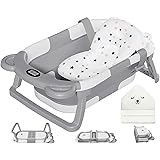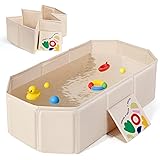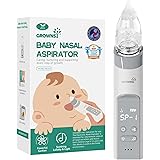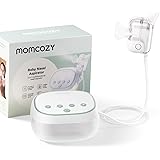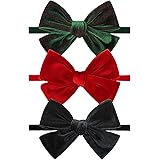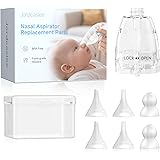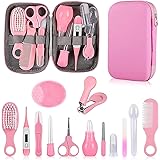Thinking about introducing your little one to the exciting world of solid foods? Perhaps you’ve watched the helpful visuals in the video above, showcasing some wonderful options for best finger foods for baby. While the video offers a fantastic visual guide, understanding the ‘how’ and ‘why’ behind these choices is often desired by parents navigating this new developmental stage. This guide is designed to complement that visual experience, providing a deeper dive into selecting and preparing suitable finger foods for your growing infant, ensuring both safety and nutritional benefit.
1. When Can Babies Start Exploring Finger Foods?
The journey into finger foods typically begins around 6 months of age, though individual readiness is always paramount. Key developmental milestones are usually observed, indicating a baby’s preparedness for self-feeding. Sitting up unsupported, demonstrating good head control, and showing an interest in food are considered crucial indicators.
An absence of the tongue-thrust reflex, where food is automatically pushed out of the mouth, is also a sign that solids can be accepted. Furthermore, a pincer grasp, allowing small pieces of food to be picked up between the thumb and forefinger, is developed later but is helpful for more refined eating. Initially, palmar grasp (whole hand) is often used.
2. Why Are Finger Foods So Beneficial for Baby Development?
Introducing finger foods is about much more than just nutrition; it’s a critical step in a baby’s overall development. When babies are allowed to self-feed, important motor skills are significantly enhanced. Hand-eye coordination is improved as they reach for and manipulate food, and their dexterity is fine-tuned as different textures are explored.
Beyond the physical benefits, encouraging independence at mealtimes can foster a positive relationship with food. Babies are given the opportunity to control their intake, which is believed to help them better regulate hunger and fullness cues. This foundational experience can contribute to healthier eating habits later in life, making baby finger food ideas vital for holistic growth.
3. Prioritizing Safety: Avoiding Choking Hazards and Preparing Food
Safety is the number one concern when finger foods are introduced to infants. A common fear among parents is choking, which can largely be mitigated through proper food selection and preparation. Always supervise your baby closely during meals; never leave them unattended while eating.
3.1. General Safety Tips for Feeding
Babies should always be seated upright in a high chair or booster seat with appropriate support. Distractions should be minimized during meal times to keep the baby focused on eating. Learning basic infant first aid, particularly how to respond to choking, is also highly recommended for all caregivers.
3.2. Essential Food Preparation Guidelines
Foods for babies must be soft enough to be easily mashed between the gums, even if no teeth have emerged yet. They should be cut into appropriate sizes and shapes; generally, stick-shaped pieces (about the size of an adult finger) are best for younger babies using a palmar grasp, while pea-sized pieces are introduced once a pincer grasp develops. Avoid anything hard, crunchy, or sticky, which can pose a significant choking risk. Round foods, such as whole grapes or cherry tomatoes, should always be quartered or sliced to eliminate the danger.
4. The Best Finger Foods for Baby: A Comprehensive Category Breakdown
A wide variety of foods can be offered to babies, ensuring a diverse nutritional intake. Focusing on nutrient-dense options from all food groups is usually advised. Introducing a range of textures and flavors early on can also help prevent pickiness.
4.1. Soft Fruits for Sweet Beginnings
Fruits are often a hit with babies due to their natural sweetness and soft textures. Ripe banana pieces, often presented as long sticks, are an excellent first option. Avocado, rich in healthy fats, can be served mashed or cut into small cubes or strips. Other good choices include cooked apple wedges (steamed until very soft), ripe pear slices, and melon chunks (cantaloupe, watermelon) with seeds removed. Berries like strawberries and raspberries should be sliced and offered in appropriate sizes, especially if they are larger.
4.2. Tender Vegetables for Nutrient Power
Vegetables provide essential vitamins and minerals and can be offered in various forms. Steamed or roasted sweet potato spears are a popular choice, being both soft and nutritious. Cooked carrot sticks, broccoli florets (steamed until tender), and green beans are also easily managed by little hands. Peas can be lightly squashed to reduce choking risk, and cucumber sticks (with skin removed for younger babies) offer a refreshing option, though they provide less nutritional value than cooked alternatives.
4.3. Protein Powerhouses for Growth and Development
Protein is vital for a baby’s rapid growth. Cooked chicken or turkey, shredded or cut into small pieces, can be offered once it is very tender. Small flakes of cooked fish (ensure all bones are removed), such as salmon or cod, are also excellent sources of protein and omega-3s. Hard-boiled eggs, mashed or cut into small pieces, provide a complete protein source. For plant-based options, cooked lentils or beans (e.g., black beans, chickpeas, mashed) can be offered, as can strips of tofu.
4.4. Wholesome Grains and Starches
Grains offer energy and fiber. Small pieces of whole-wheat toast or unsalted rice cakes, softened with water or breast milk/formula, are good introductory options. Cooked pasta shapes, such as rotini or penne, are easily gripped by babies once they are soft. Small, cooked oat pieces or other grain-based baby puffs (always check sugar content) are also popular for practicing fine motor skills. Porridge, made with iron-fortified baby cereal or plain rolled oats, can also be offered on a preloaded spoon.
5. Introducing New Foods and Managing the Mess
Introducing new foods is a gradual process; it is recommended to introduce one new food at a time, waiting a few days before introducing another. This approach helps in identifying any potential allergic reactions. While mess is an inevitable part of baby-led feeding, it’s an important part of sensory development and exploration.
Using a splash mat under the high chair can help with cleanup. Dressing your baby in a bib (preferably a waterproof, wipeable one with a crumb catcher) can also minimize clothing changes. Remember that eating is a learning experience, and not every morsel will make it into the mouth. Patience and a sense of humor are considered key ingredients during this stage of development. The journey of finding the best finger foods for baby is often a delightful exploration for both parent and child, fostering independence and healthy eating habits from an early age.
Tiny Tastes, Big Questions: Your Q&A
When can babies typically start eating finger foods?
Babies usually start around 6 months old, when they can sit up without support, have good head control, and show interest in food.
Why are finger foods beneficial for baby development?
Finger foods help babies develop important motor skills like hand-eye coordination and dexterity. They also encourage independence, which can lead to healthier eating habits later on.
What are key safety tips for introducing finger foods to babies?
Always supervise your baby closely while they eat, ensure they are seated upright in a high chair, and prepare food to be very soft and cut into appropriate, non-choking shapes.
What kind of foods are good for a baby’s first finger foods?
Good first finger foods include soft fruits like ripe banana or avocado, tender steamed vegetables like sweet potato or carrots, and small pieces of shredded, cooked chicken or mashed hard-boiled egg.
How should I introduce new finger foods to my baby?
Introduce one new food at a time, and wait a few days before introducing another. This helps you identify any potential allergic reactions.


